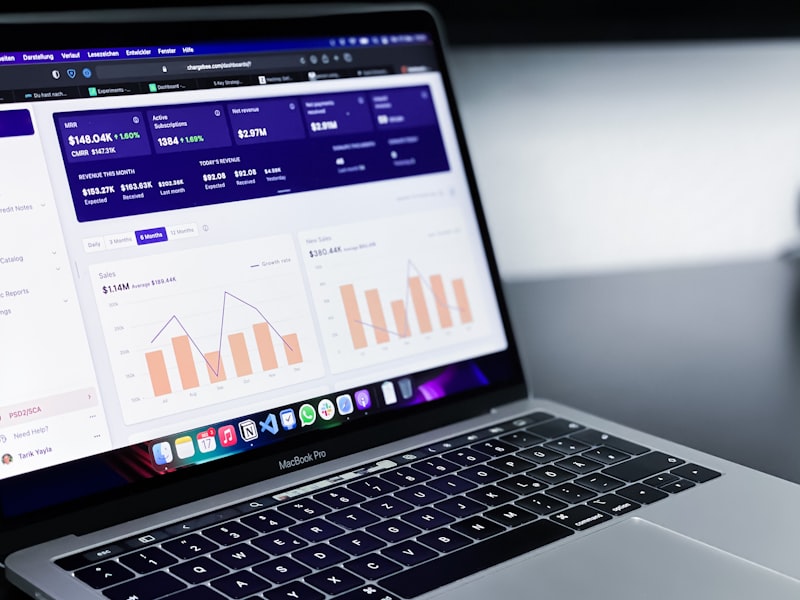"PLG is about understanding your users so deeply you know what they need before they do."
- Tomasz Tunguz, Redpoint Ventures
Product-Led Growth (PLG) has become a buzzword in Silicon Valley and the startup world in recent years. The basic premise of PLG is that your product itself should be the main driver of user acquisition, activation, and expansion. Rather than relying primarily on sales, marketing, or other channels, the product's user experience guides the user through signup, onboarding, and upgrades.
PLG has been promoted by advocates as a new paradigm for growth and business model design. But like any hot concept, it's worth examining critically. Is PLG substantive or just hype? Here I'll analyze the merits and limitations of a product-led approach.
The appeal of PLG
There are several reasons why PLG has gained so much traction:
User experience advantage: PLG puts user experience front and center. Since your product guides the user journey, PLG forces you to obsess over UX quality and seamlessness. This creates happy users who spread organic word-of-mouth.
Lower friction signup: PLG removes the sales hurdle for user acquisition. Users can easily get value from your product immediately, instead of talking to sales. This increases conversion rates.
Scalability: User acquisition and expansion happens automatically through the product. This makes growth more scalable than field sales. Viral loops and network effects are also easier to bake in.
Better product-market fit: PLG's growth relies on delivering core value to users continuously. This incentive aligns well with building what users actually want.
Several unicorn startups like Slack, Dropbox, and Zoom adopted PLG to drive growth. Their success shows the model can work at scale.
PLG's limitations
However, PLG has some clear limitations as well:
Not suitable for all business models: PLG works best for low-touch self-serve products with recurring revenue. High-touch services or enterprise sales still need human interaction.
Harder to monetize initially: PLG focuses on user growth first. Monetizing comes later. This means delayed revenue generation compared to sales-assisted models.
Can undermine profitability: The cost of acquiring users via PLG can be high, since you bear the full product usage costs. Low conversion rates can eat into unit economics.
Not effective for complex products: Simple self-serve products benefit most from PLG. But complex or customized products still need sales advice and support during onboarding.
Still needs marketing: Marketing can't be ignored entirely. Paid marketing, influencers, and content fuel awareness which feeds PLG engines.
So PLG has some intrinsic limitations. It is best suited to certain product types and business models.
An evaluation of PLG's merits
Given the pros and cons, here is an evaluation of PLG:
PLG is a powerful model when applied to the right product: For simple, viral, recurring revenue products, PLG can maximize growth in a scalable way.
PLG is complementary to, not a replacement for sales & marketing: You still need awareness and human touchpoints. PLG augments other go-to-market efforts.
PLG forces a strong user focus: Delighting users and driving engagement is fundamental. This creates strong organic growth.
PLG is hard to do right: Building an amazing, viral product with robust automations is extremely challenging. It's not a shortcut.
PLG is part of a trend toward automated growth: The broad rise of product usage analytics, attribution, funnel optimization, and no-code growth tools all enable PLG.
So in summary, I would argue PLG is not just hype - when applied thoughtfully, it can accelerate growth significantly. But it has downsides and requires highly refined execution. PLG is not a panacea or shortcut to growth. It should be wielded carefully and strategically.
When does PLG make sense?
When does it make sense to embrace PLG? Here some key factors that favor a PLG approach:
- Your product lends itself to a self-serve model
- Onboarding and getting value is fast and frictionless
- Expansion/upgrades happen seamlessly in-product
- Virality and social sharing are baked into the UX
- Your market has easy access to web/mobile platforms
- Automating sales touchpoints won't hurt experience
Some examples of products well-suited to PLG:
- Collaboration tools (Slack, Dropbox)
- Freemium media services (Spotify, Pandora)
- Viral social apps (Pinterest, Instagram in early days)
- Self-serve developer tools (Twilio, Stripe)
Products ill-suited to pure PLG:
- High-touch services (consulting, healthcare)
- Enterprise sales cycles
- Complex/custom products
- Big-ticket purchases requiring human sales
- Markets with limited internet access
| Product Type | PLG Suitability |
|---|---|
| Self-serve SaaS | High |
| Freemium media content | High |
| Viral social apps | High |
| Complex enterprise software | Low |
| Custom manufactured goods | Low |
| High-touch professional services | Low |
Key principles for executing PLG
If you determine PLG is a fit, how do you execute on the model successfully? Here are some key principles:
Obsess over your core value proposition - Does your product deliver significant tangible value, quickly?
Remove every friction point in onboarding - How seamlessly can a new user get set up and experience value?
Build natural upgrade paths - How smoothly and intuitively do you guide users to expanded features, modules, or plans?
Enable social sharing and virality - Does your product harness word-of-mouth and network effects?
Instrument everything and analyze usage data - How effectively do you leverage analytics to optimize conversions across the funnel?
Continually experiment and test - How rigorous is your A/B testing methodology for funnel optimization?
Automate as much as possible - Where can you replace manual processes with triggers, nudges, bots, and AI to scale?
Invest in educational content - Can you leverage blogs, guides, and videos to attract and onboard users?
The above principles require top-notch product design, engineering, data science, automation, and content skills to get right. It's a high bar.
Potential downsides to watch out for
What are the potential downsides or blind spots to watch out for? A few to consider:
Over-automating at the expense of human interaction: Avoid being so dogmatic about automation that you remove helpful personal touchpoints.
Focusing on acquisition over delighting users: Don't get so obsessed with funnel metrics that you neglect long-term user experience and retention.
Ignoring non-product channels: Still leverage traditional marketing and sales where helpful. Don't put all eggs in the PLG basket.
Maximizing growth at the cost of unit economics: Model out unit economics carefully. Unprofitable growth is not sustainable.
Product bloat: Adding lots of new features can increase complexity over time, compromising ease-of-use.
The above pitfalls can be avoided with thoughtful execution of PLG.
Conclusion
PLG is not just a buzzword - it is a proven model for accelerating growth in the right circumstances. For self-serve products with recurring revenue, PLG can help drive acquisition and lower churn sustainably. However, it requires extremely thoughtful product design and automation. PLG is also not universally applicable; other go-to-market approaches still have merits. Smart companies will evaluate when and how much to utilize PLG versus traditional sales and marketing. With nuanced and strategic implementation, a PLG model can create big competitive advantages. But it is also challenging to pull off successfully.
The bottom line - PLG has real merit, but it needs to be evaluated critically against your specific product needs and business model. Fads come and go, but PLG is more than hype. With the right execution, it can move the needle on growth in a scalable way.
FAQ
What are the key benefits of a Product-Led Growth model?
The main benefits of PLG are increased conversion rates by reducing friction in signup and onboarding, higher organic and word-of-mouth user acquisition from product virality, scalable growth that is embedded in the product experience, better product-market fit as growth relies on delivering core user value, and lower cost of customer acquisition in some cases.
What types of products or businesses is PLG best suited for?
PLG works best for self-serve SaaS or software with recurring revenue model, freemium media or applications with in-app purchases, simple and intuitive products that are easy to onboard, and products with network effects or social virality built-in. It is less optimal for high touch services or enterprise sales models, complex products requiring customization, big ticket one-time purchases requiring sales assistance, and markets with limited internet access or tech savviness.
How does PLG compare against traditional sales or marketing led growth?
PLG complements rather than replaces traditional go-to-market models like sales and marketing. Key differences are: PLG focuses on product-driven growth while sales/marketing drive external growth. PLG has delayed monetization as acquisition precedes revenue; sales brings faster revenue. PLG has higher user acquisition costs in some cases as product usage drives costs. And PLG typically has better retention and lower churn long-term as users are organically acquired.
What are the downsides or limitations to be aware of with PLG?
Limitations to consider are: PLG delays monetization as user acquisition precedes revenue generation. It works best for low-touch self-serve models; high-touch needs sales engagement. It can have lower conversion rates than sales, requiring greater scale. PLG requires thoughtful automation and UX design; it's not a shortcut to growth. And it still benefits from marketing and sales to drive awareness at top of funnel.
What metrics are most important to evaluate the success of PLG?
Key PLG metrics are: Signup to activation conversion rate, virality and network effects quantified through viral coefficient, time to initial value realization or first core action, retention rate over time segmented by acquisition channel, long term customer lifetime value by channel, and unit economics - CAC vs LTV.
How do you ensure you don't sacrifice customer experience in pursuing PLG?
Avoid over-automating at the expense of helpful human interaction. Monitor user satisfaction closely through surveys and NPS scores, analysis of support tickets and churn drivers, review of app store ratings and social media mentions, and user testing key workflows and friction points.
What are examples of companies successfully using PLG models?
Examples are: Slack, Dropbox, Spotify, Pandora, Pinterest, and Calendly.
What core product capabilities enable PLG success?
Key enablers are: Smooth and fast onboarding user experience, ability to easily share and invite others, automated workflows and in-app messaging, usage analytics and A/B testing capabilities, intuitive in-app upgrades and purchases, referral and affiliate programs, and educational in-product content.
How can companies determine if PLG model makes sense for them?
Ways to evaluate PLG fit are: Benchmark product against PLG best practices, review case studies from similar companies or industries, survey prospective users on willingness to self-serve, analyze unit economics of self-serve vs assisted sales, model viral coefficient based on sharing incentives, and prototype and test onboarding experience.
What are the most important do's and don'ts in executing PLG successfully?
Key tips are:
DO: Obsess over core value delivery and seamless onboarding, instrument everything and rigorously analyze data, experiment constantly to optimize user journey, and automate intelligently while preserving human touch.
DON'T: Lose focus on long term customer satisfaction, automate sales touchpoints that users value, ignore non-PLG growth channels entirely, and pursue growth at the expense of profitability.






